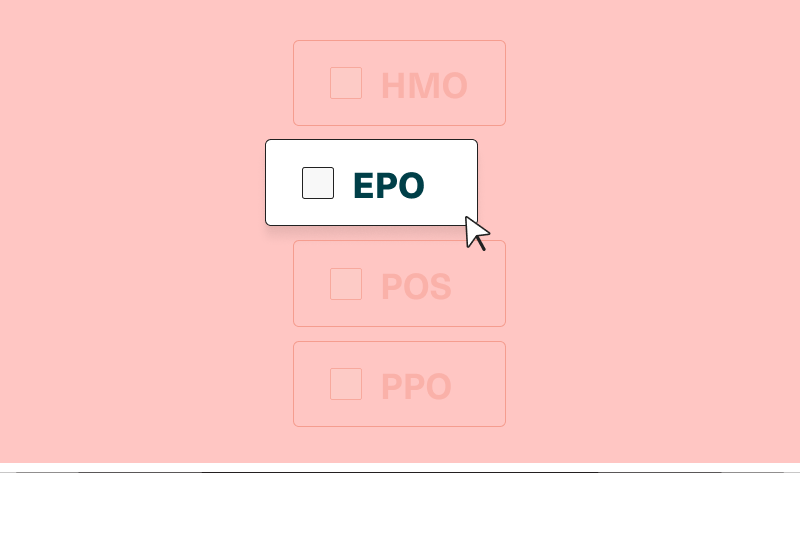What is Reference-Based Pricing (RBP) in Healthcare?

Last updated on April 24, 2023
Reference-based pricing (RBP) is an alternative to traditional healthcare pricing where reimbursement rates for medical services are based on a specific reference point rather than on a provider’s billed charge.
As an employer, the cost of your employees’ healthcare claims plays a critical role in the prices you pay for their health benefits. But understanding the actual cost of a healthcare claim can be a challenging task. Traditional insurance companies provide plans for a fixed monthly fee which is often inflated and opaque.
Companies that are seeking reasonable healthcare costs while offering attractive employee benefits may be overlooking reference-based pricing as an option. Are you?
How reference-based pricing works
As referenced above, reference-based pricing is a cost-containment model that pays claims based on an established benchmark rather than based on prices negotiated between a provider and payor.
This means employers’ healthcare costs are set based on prices set by a reference point like Medicare’s annual reimbursement schedule, and not based on arbitrary markups from healthcare providers and facilities. RBP is more common in self-funded health plans, since self-funded employers capture a greater portion of their claims savings than fully funded employers.
Defining benchmarks for pricing
The benchmarks for RBP are set by referencing a predetermined rate (or range of rates) for a specific medical service or procedure. So, how are these benchmarks set? That will depend on the program or plan — though the overarching goal is to set fair, reasonable prices for quality healthcare services.
Examples of organizations that establish pricing benchmarks:
- Centers for Medicare and Medicaid Services (CMS) for Medicare rates
- Self-insured employers that use historical claims data
- Healthcare providers that use their own cost data
- Professional associations or third-party vendors
Examples of common benchmarks created by these organizations:
- Medicare reimbursement rates
- Negotiated rates with provider networks
- Bundled payment rates for episodes of care
- Fair pricing data from third-party vendors
- Provider’s cost of performing a procedure
How reimbursement rates are calculated
Reference-based pricing methodologies vary greatly based on the preferences of the payor. A typical methodology is to calculate reimbursement rates as a percentage of an established benchmark.
Reimbursement rate = Benchmark rate x Percentage
Example:
The benchmark for a particular medical procedure has been set at $1000.
The reimbursement rate is set at 150% of the benchmark.
The reimbursement rate would be $1500.
How is reference-based pricing different from traditional health care pricing?
In a traditional, fully-funded plan, the insurer administers an employer’s healthcare claims for a fixed monthly fee. The carrier’s claims rates — the amount the insurance carrier will pay the healthcare provider for each medical service delivered — are privately negotiated between the carrier and the healthcare providers. The carrier’s estimate for those claims prices is just one element of the monthly fee. Other factors in the monthly fee include administrative expenses for managing claims or markups and premiums added on to claims prices.
Isolating the true cost of claims can be difficult at best on a fully-funded plan. Carriers are under no obligation to share the reasons behind their pricing, and their customers rarely ask.
Even though healthcare costs are one of the biggest business expenses and they continue to rise, there is little-to-no pricing transparency. This makes budgeting for healthcare costs from year to year challenging for companies.
On the other hand, reference-based pricing sets claims costs based on established benchmarks such as Medicare prices. RBP is a model more frequently seen in self-funded plans, where employers pay for their own claims instead of paying an insurer a fixed fee for handling their claims. In the self-funded model, the employer has a huge incentive to keep provider payments under control.
Related: What to expect in a small business health insurance quote
Benefits of reference-based pricing
- Cost savings: By setting fair and reasonable pricing for medical services, RBP can help reduce the overall cost of healthcare.
- Increased transparency: By establishing clear, consistent pricing for healthcare services, RBP can help employers and employees better understand costs of care.
- No Out of Network Fees: Some RBP programs eliminate the concept of in- or out-of-network providers, essentially opening up healthcare options for employees.
Drawbacks of reference-based pricing
- Limited provider networks: There are some RBP programs that will only reimburse a limited network of providers that have agreed to RBP rates, and this can make it harder for employees to access the care they need.
- Balance billing: As mentioned previously, if a provider doesn’t accept the RBP reimbursement rate, then it’s likely that the employee will be billed the difference. This is usually experienced by the employee as surprise billing that creates confusion and financial hardship. See below on how this can be mitigated by partnering with a value-based healthcare company like Sana.
- Administrative burden: Establishing & maintaining accurate benchmarks, and managing contracts with provider networks can be a burden for large self-insured employers who may design and manage their own health plans.
How Sana overcomes these challenges
Sana’s reference-based pricing program is based on reimbursement rates designed to be fair and reasonable to providers. Sana uses Medicare and a variety of other pricing data sets to determine the benchmark for our RBP. As such, providers typically accept our RBP without issue — balance billing occurs with less than 2% of all Sana claims.
When balance billing does occur, Sana has your employees’ backs. We know balance bills can be stressful and overwhelming, but rest assured, Sana will do everything we can to minimize what members have to do, and that they will never owe more than the patient responsibility outlined in their plan.
Sana’s plans will also work with any provider and are never subject to out-of-network fees.
Related: Level-Funded Health Plans
How Does Reference-Based Pricing Save My Business Money?
Reference-based pricing in health care can lead to cost savings for employers in two ways.
Transparency
First of all, RBP increases transparency because it sets costs from a transparent, established benchmark. There’s no room for providers or facilities to disguise arbitrary pricing through hidden fees or opaque cost structures. As a result, employers can reasonably trust they’ll avoid markups and pay lower premiums. According to Mercer, the potential savings can be up to 40% on overall medical spend.
Alignment of Incentives
To understand why carriers allow their negotiated rates to get so much higher than Medicare’s pricing, you need to know the second driver of savings – the alignment of incentives.
Traditional health insurance companies selling fully funded plans are actually incentivized to increase claims costs — an issue that puts them at odds with employers. This is due to the Affordable Care Act (ACA) mandating carriers to spend at least 80% of premiums on medical claims. Since their profit is limited by the amount of claims processed, fully funded plans can only grow profits by covering more lives or increasing the average cost of claims per life. That leaves them with little incentive to push back against providers increasing the price of their services each year. As the cost of claims (the 80%) goes up, the carrier’s potential profit (remaining 20%) grows accordingly. Employers are at the receiving end of these increases.
Self-funded medical insurance plans for businesses lack these strange incentives, as the employer is paying the claims themselves. Referenced-based pricing provides an efficient way for those employers to arrive at fair, transparent pricing without creating contracts with every provider their members want to use.
Related: What can small business owners do for health insurance?
Reference-based pricing FAQs
Reference-based pricing typically covers high-cost healthcare services such as surgical procedures, diagnostic imaging, lab tests, outpatient procedures and emergency care. Note that the types of services covered will vary based on the RBP plan in use.
Providers play an integral role in reference-based pricing as they can accept, reject or negotiate for higher RBP reimbursement rates.
Disputes over RBP reimbursement rates are resolved through negotiation, mediation or legal action. If you are covered under a Sana plan, then Sana will work to minimize the stress and help resolve the balance bill.






